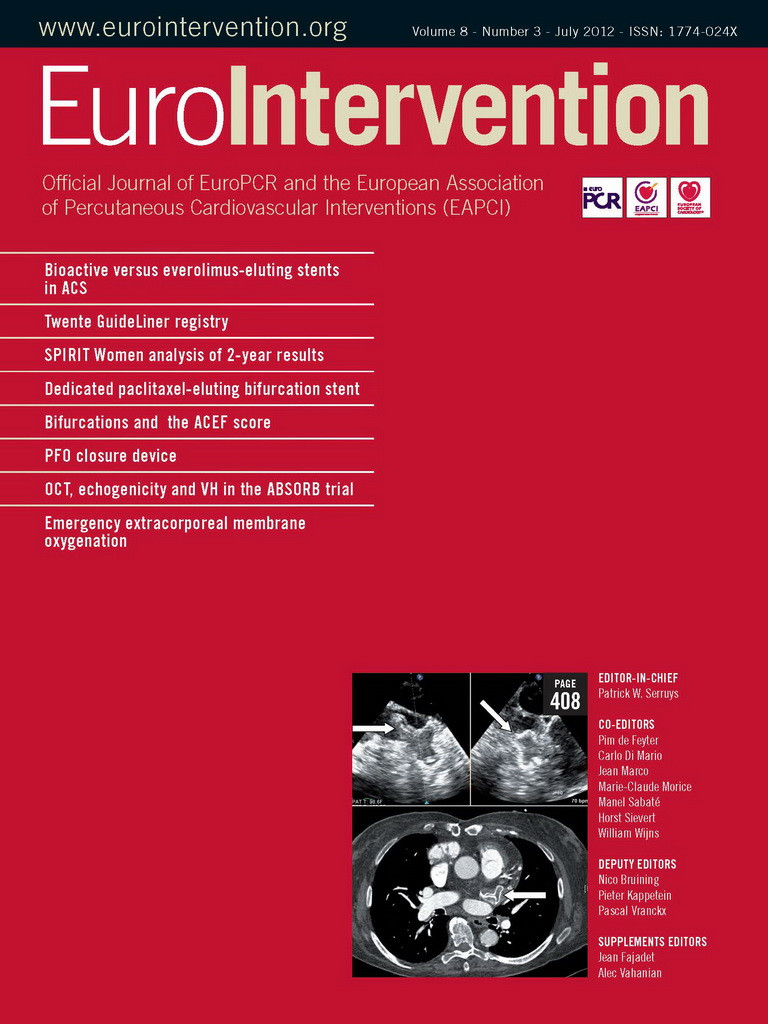It is no secret that since its creation in 2006, the EAPCI has been growing steadily, fast becoming one of the largest Associations within the European Society of Cardiology (ESC). In last month’s column we spoke about our meeting –EuroPCR– where our Association is increasingly active and visible in both preparations and planning, and where we had the opportunity of meeting many of you at our dedicated stand. This was a natural opportunity for some of you to join, and we thought it might be of interest to review our membership statistics in this month’s editorial.
Our Association currently has 3970 members –200 who joined in May alone, many during EuroPCR– and our goal of passing the 4,000 point will certainly be reached, without question, by the end of this year (Figure 1). While membership has always been representative of our European identity, the emphasis on the International has been part of the EAPCI since the very beginning, an outlook that has borne fruit in terms of an active membership coming from many countries outside the ESC with a strong participation from members in India, China and the Near East (Figure 2).
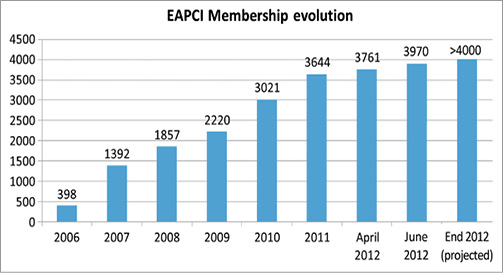
Figure 1. Evolution in membership of the EAPCI.
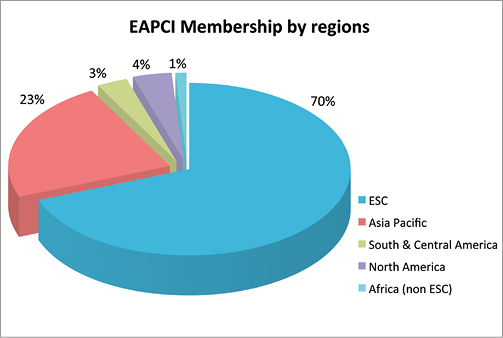
Figure 2. Membership by regions.
Looking at the profile of an individual member, we find that the majority are working cardiologists, male, with over half being between the ages of 35 and 55 (Figure 3, Figure 4 and Figure 5). These demographic numbers are important to us, because they point to areas where we need to concentrate in the future in order to respond to you, our current membership, while encouraging others, who are poorly represented to join.
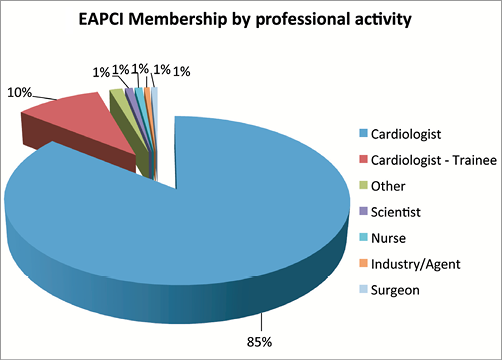
Figure 3. Membership by activity.
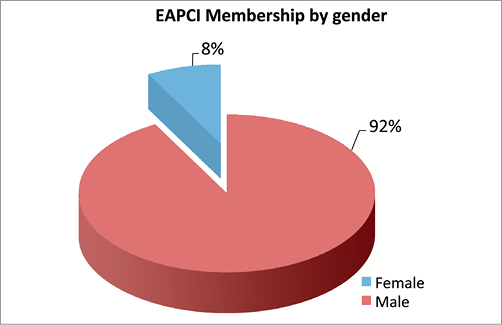
Figure 4. Membership by gender.
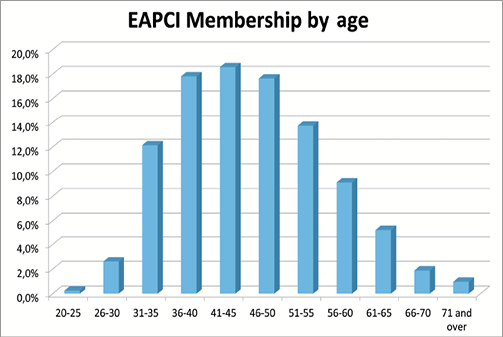
Figure 5. Membership by age.
Activities and membership, two sides of the same coin
You are not joining the EAPCI simply for our name, you are joining because of the vibrancy of our activities, their relevance to you, and their accessibility to the community.
Our official meeting, EuroPCR has become the leading meeting in interventional medicine worldwide, London PCR Valves is the new yearly rendezvous in valvular disease. This journal, EuroIntervention is our journal and a clearly recognised leader in its field. The EAPCI is also actively organising PCR Seminars and working closely with Young Interventionalists. Our association is deeply involved in such ground-breaking global initiatives as Stent for Life, and the recently endorsed “Women in Innovation”, where the objective is to improve “the cardiovascular management of women” through, among other actions “enhancing the awareness of the risk of coronary artery disease in women.”
We are involved as well in the preparation of sessions at the annual European Society of Cardiology annual congress and, though firmly based in Europe, we have always had an active international outlook with strong cross-participation with meetings and groups such as the American College of Cardiology (ACC), the National Interventional Council of the Cardiological Society of India (NIC/CSI), the China Interventional Therapeutics (CIT) congress and the South American interventional organisation, the “Sociedad Latino Americana de Cardiologia Intervencionista” (SOLACI).
Without a doubt, the EAPCI is a key player in educational resources where we often take the lead, such as the PCR-EAPCI textbook and the eLearning platform of the ESC. This platform, which we will return to in next month’s column, is indicative of how we work to respond to the needs of all our membership. This new educational tool allows individuals to learn independently at their own pace, when they have the time and the desire to do so. While this is an incredible resource for cardiologist-trainees who make up around 10% of our membership today, it is also of great use and aimed at mid-career specialists looking to strengthen any lacuna in their techniques or knowledge. As we hope all who are touched by this new eLearning will become members of our Association (and further increase the legitimacy of our claims to truly represent our speciality), this is a clear example of how the work of the EAPCI is designed to encourage greater participation in our activities by both existing members, and the younger, less represented groups. Applications to join the EAPCI can be submitted at http://www.escardio.org/communities/EAPCI/Pages/membership.aspx
For our members, today and tomorrow
You can see that today, the EAPCI is far more than just our membership figures, but an Association that responds to the needs of our ever changing and fast evolving community. Our membership, after six years of constant growth, reflects and is correlated with this intensive activity –each mirrors the other– that of an active and vibrant Association working together with common goals and desires. We are proud to be part of this movement and proud that you have chosen to join us in this endeavour.
